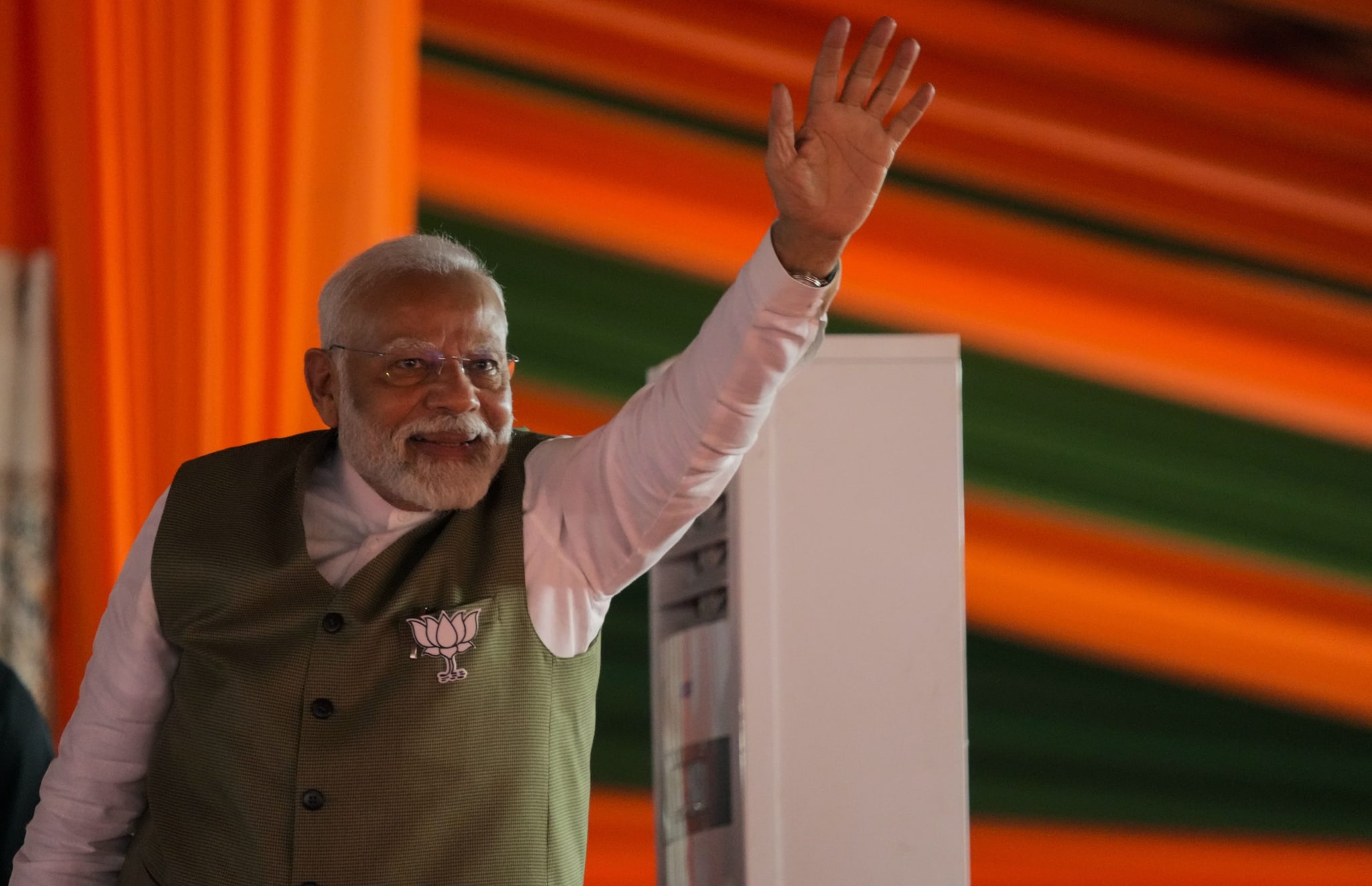
His remarks come amid expectations of significant discussions on trade agreements and investment opportunities during Modi’s meetings with President Donald Trump and senior US officials.
“There is a great desire to see India reduce its tariffs, its rather considerable non-tariff barriers, and bureaucratic red tape that slows down a lot of decision-making,” Keshap said.
According to Keshap, despite strong business sentiment toward India, companies face challenges due to protectionist policies that affect foreign direct investment (FDI) and economic growth. Reducing these barriers would benefit Indian businesses and spur greater economic dynamism and global competitiveness.
Keshap pointed to agricultural goods and certain consumer products as sectors where tariff reductions could be particularly impactful. He reiterated previous statements from the US administration, including those by former USTR Representative Lighthizer, characterising India as one of the most protectionist large economies while acknowledging the potential reasons behind such policies.
Keshap also outlined the US’s desire for more significant Indian investment in several key sectors, including energy, defence, and agriculture. He expressed a strong interest in seeing India increase its imports of US LNG and crude oil, emphasising that America has a proven track record as a reliable energy partner and supplier. Such increased trade, he noted, could also help balance the structural trade deficit between the two countries.
In the defence sector, Keshap reiterated the US’s support for full defence collaboration, aiming to bolster the deterrence capabilities of both India and the United States.
Edited Excerpt:
Q: On trade, what do you expect? Will they set out a roadmap for a trade agreement?
Keshap: We’ve been stalled out for the past few years on trade facilitation and innovation between the US and India. These are two big, bold, ambitious leaders. So, I hope they will be ambitious in achieving the trajectory of our two countries. And I hope they’ll come up with something robust.
Q: After the new administration was sworn in, what recommendations did the US Chambers of Commerce, the USIBC, the US government, and the Trump administration make regarding the trade agreement with India and reducing the trade deficit?
Keshap: President Trump just got sworn in. He had minister S Jaishankar here for that inauguration. They had a Quad meeting immediately thereafter with the four foreign ministers of the Quad, and now we are hurtling right into a visit by Prime Minister Modi. This is indicative of the very warm and special relationship between President Trump and Prime Minister Modi dating back to the first Trump administration. It’s also indicative of the importance of India, and, more importantly, of India-US ties, in helping propel economic growth, prosperity and stability on this planet.
While the other quasi-great powers have problems, India and the US are much stronger. We are more robust, and our societies are more resilient. We are bursting with innovation because of our free people and their talent, and our economic growth is strong — and it can become even stronger.
In its early days, this administration looked at ways to transform and unleash the animal spirits of the American people and the American economy to boost growth. That’s true of India as well. So, USIBC has always been in favour of this. This is our 50th anniversary, and for 50 years, we have advocated for the strongest possible strategic economic and technological collaboration between the people of the United States and the people of India.
We put out a report two weeks ago that outlines nine different areas where we ought to intensify our relationship — defence, fintech, digital economy, artificial intelligence, quantum computing, pharmaceuticals — the sky is the limit if we focus. And I think there’s an air of ambition right now in what the two leaders want to achieve. That means that we can probably get a lot of good stuff done
Q: Could you give us a sense of the kind of US CEOs, which sectors those CEOs would be from, and who would call on Prime Minister Modi? We believe that the National Security Council, the White House, is handling this visit very tightly. There will be a business meeting with the PM, but we don’t know who will be there yet.
Keshap: The two governments have to decide how they will structure the visit, but we at USIBC have dozens of top CEOs ready to engage with both the Prime Minister and the President. These are CEOs from top companies in e-commerce, financial services, banking, defence, new economy, digital economy, and life sciences. We’ve compiled a list of 30 CEOs ready to change their plans and fly in to be part of this. And that list is growing every minute.
Q: What about energy ties? Do you expect the President to urge Prime Minister Modi to buy more crude and LNG from the US? And do you expect any agreement on that front?
Keshap: I can’t speak for President Trump, but I would 100% love to see India buy more LNG, more crude, and innovate with us on nuclear, especially modular nuclear. There’s an energy revolution that the US and India can drive.
We’ve already got a strong critical minerals working group. There’s a lot else we can do. I’m very bullish on modular nuclear, but this is where governments have to make decisions. America has a proven track record of being a reliable partner and supplier for oil and gas. If India buys more oil and gas, it will significantly help balance the structural trade deficit between Washington and Delhi. President Trump has also clearly stated that he wants India to buy more defence articles. We, of course, fully support that. We support full defence collaboration to ensure the deterrence capability of India and the United States. I want more agricultural sales — soybeans, corn, etc. So, the American side has quite a bit of ambition for what could come out of it. And I think there’s also a desire to see India take steps to reduce tariffs further, reduce non-tariff barriers, and speed up business, including cutting down on red tape.
We did a little internal survey of our companies. While they’re very bullish on India, they’re investing like crazy in India, they’re expanding in India, just like Indian companies, who are also members, are expanding heavily in America, paying taxes here, employing people here, there is a great desire to see India reduce its tariffs, it’s rather considerable non-tariff barriers and bureaucratic red tape that slows down a lot of decision making. If that happens, India’s GDP will grow, FDI will increase, and it’ll benefit the Indian people.
Q: What are the top three sectors where we need to reduce tariffs, according to the Trump administration and the US chambers?
Keshap: I think agricultural goods and certain consumer products as well. According to former USTR Representative Lighthizer, India is the most protectionist large economy on earth, and that may be for solid reasons. I mean, you have to see what the Indian government does for its people, but I think it actually would serve to advance India, make it more dynamic, more globally competitive, enhance FDI flows and job creation, tax generation, if India were to drop these barriers and be a bit more confident about itself. And that’s something that President Trump and his team will be looking at.
Watch the accompanying video for the entire conversation.

